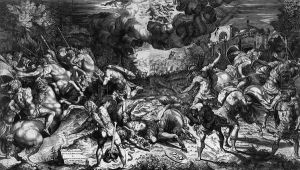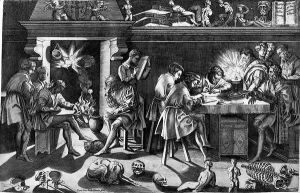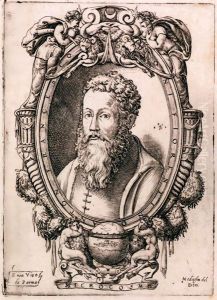Enea Vico Paintings
Enea Vico was an influential Italian engraver, born in Parma in 1523. His work and contributions to the art world during the Renaissance period have been celebrated for their intricacy and the innovative techniques he employed. Vico's career was marked by a deep engagement with the classical past, which he reinterpreted through his engravings.
Vico's early life was dedicated to the study of art and antiquity, a passion that was evident in his later works. He initially trained under the guidance of prominent artists of his time, which allowed him to develop a unique style that combined classical themes with a Renaissance perspective. His talents were recognized early in his career, leading to commissions from some of the most prestigious figures of his era.
Throughout his career, Enea Vico was particularly known for his mastery in engraving. He produced a wide range of works, including representations of ancient statues, busts, and other artifacts, as well as scenes from mythology and everyday life. His engravings were not only artistic achievements but also served as important documents of the Renaissance's interest in the classical world. They played a crucial role in disseminating classical knowledge and aesthetics across Europe.
Vico's work was characterized by its attention to detail and a commitment to realism, traits that made his engravings highly sought after by collectors and scholars. He was also known for his innovation in the technique of engraving, which contributed to the evolution of printmaking during the Renaissance. His influence extended beyond Italy, affecting the development of engraving in other European countries.
Enea Vico's contributions to art were recognized during his lifetime, but his legacy has continued to endure. He passed away in 1567, leaving behind a body of work that continues to be studied and admired for its artistic and historical significance. Through his engravings, Vico has provided future generations with a window into the Renaissance's fascination with the classical past, making him a pivotal figure in the history of art.


